ZimVie Spin-off Deep Dive
March 1, 2022
ZIMV: $25.42
Shares Outstanding: 26.1MM *
Spin-off Ratio: 1:10
Tax Status: Tax Free
Market Cap: $662MM
Debt: $555MM
Cash: $76MM
Enterprise Value: $1.1BN
2022 Revenue Guidance: ~$1.0BN (flat vs. ‘21)
2022 EBITDA Guidance: $134MM (at midpoint)
2022 EPS Guidance: $2.10-2.30.
*Zimmer retained ~20% of shares and will monetize them at a later date.
Conclusion (TL;DR)
Zimvie (ZIMV), a recent spin-off from Zimmer Biomet (ZHM), began trading today, March 1, 2022. I had highlighted that it looked unattractive in the when-issued market trading in the high $30 to low $40 range. It opened today at $32.80 and declined precipitously, closing at $25.42. It still looks quite pricey to me trading at 8.2x normalized (I view 2019 EBITDA – $139MM – as normalized). The ZimVie business consists of a spine business (54% of revenue) and a dental business (46% of revenue). The spine business is shrinking but management promises a turn around. The dental business is growing. Neither business is a market leader – dental is #5 and spine is #6. The business generated $66MM of free cash flow in 2019 (last “normal year”) but free cash flow declined in ‘20 and ‘21. Further, the company will have to incur public company expenses and $13MM annually of interest expense.
ZimVie could be a takeout candidate, but that will have to wait for 2 years (there is a 2 year restriction on acquisitions of tax free spin-offs).
Theoretically, ZimView could be attractive at the right price. But that price would have to be very low to get me interested. I think fair value is probably around $20 (would imply EV/EBITDA of 7.2x and P/E of 9.0x).
Resources from Zimmer Biomet
ZimVie Investor Day – February 7, 2022
Spin-off Press Release – February 5, 2021
Spin-off Slide Deck Presentation – February 2021
IR Contact
Keri Mattox , Senior Vice President, Investor Relations and Chief Communications Officer
203-399-0856
keri.mattox@zimmerbiomet.com
Ezgi Yagci
617-549-2443
ezgi.yagci@zimmerbiomet.com
Overview
Just over a year ago, Zimmer Biomet announced the spin-off of their spine and dental segments into a new company. The spinco has since been named ZimVie, and trades under the ticker ZIMV.
The new company’s enterprise value is ~$1.1BN, far short of the parent company’s $32.0B enterprise value, adjusted for the spinoff. There could be indiscriminate selling pressure post-spin because of the size differential.
ZimVie management expects its spine division to decline MSD over the next year or two. The dental business is expected to grow 5-6% topline. The value of the company is highly dependent on the multiple choice–comps for dental, for example, can trade between 15x (Osstem Implant) and 100x (Straumann) unlevered free cash flow. We estimate that the company is worth around $20 per share at 7x 2022 UFCF for spine and 15x 2022 UFCF for dental, with upside potential at $30 per share and downside near $12.50 per share.
Why the Spin-off?
Management suggests that these small, non-core businesses could use increased focus on the drivers that will improve these segments specifically. There’s not too much that’s special about their pitch, in this regard.

Spin-off Overview

ZimVie operates in two segments:
Spine (54% of Revenue, 43% of FCF)
Dental (46% of Revenue, 57% of FCF)
Spine: Cervical disc replacement (“CDR”) and scoliosis are two of the most common back issues requiring surgery, and ZimVie’s spine products address each of them. The company sells to surgeons and medical care providers who then prescribe the product. The company estimates that this segment is currently in decline but will rebound in either 2023 or 2024 at LSD revenue growth. In 2021, we estimate the segment will generate $84.1M in EBITDA, and $37M in unlevered free cash flow, before corporate overhead. The market is estimated to be $12B in sales, which would give ZimVie approximately a 5% share.

Dental: ZimVie seems to be putting their chips behind this segment. They expect MSD growth, and potentially HSD growth for the next several years. The market for dental is estimated currently at $8B in revenue, of which ZimVie will likely capture around 6% in 2021. ZimVie believes that they can capture additional share by educating practitioners and patients on the products and services available. Management also proposes that focus on emerging markets where disposable income is increasing will lead to greater pull-through on sales. Incremental costs in the dental implant business are low, so profits are the direct result of additional volume. The industry appears quite fragmented, and products don’t appear to be sufficiently differentiated to warrant significant pricing power.



Company Strategy
The primary driver of value creation post-spin seems to rest on sales penetration in the dental implant industry. Pure-play comps trade generally at juicy multiples. It’s likely that the high multiples are the result of a relatively stable business that grows with an aging population and technical innovation. In addition, ZimVie suggests that only 25% of eligible patients receive dental implants because they are usually out-of-pocket expenses and require oral surgeons rather than dentists, though that may be changing.

Putting products in the hands of younger dentists and surgeons during their education and training appears to be sticky–this is a large barrier to entry because of the switching costs for practitioners to learn how to prescribe, use, and implement a new medical device, and the risk of a poor outcome using a device that they are not familiar with. In addition, dental implants are often paid out of pocket rather than covered by insurance, which adds an additional layer of difficulty for a new entrant or for a smaller incumbent to capture share. ZimVie appears to be most interested in lowering these barriers to entry through newer innovations and with out-of-the-box surgery toolkits and templates. Think of it like having a stencil for drawing, except this is a stencil to guide a new dental implant. This sort of guide-tool helps make implementation of the new device more accessible to less experienced practitioners and more experienced practitioners use devices new to them.
Competition
ZimVie operates in a fragmented market with several competitors, of which some are pure-play while others are several consolidated businesses. The spine industry seems to be a smaller segment for most of their competitors like Stryker or Johnson & Johnson. Dental appears to be dominated in particular by Straumann, which generates $3B in revenue primarily in the same subsegments as ZimVie’s dental business. The closest comparable to ZimVie’s dental business is likely Osstem Implant, with a $1.6B EV and estimated $687M in sales at the current USD/KRW spot.

Management

ZimVie hired it’s CEO shortly after the spinoff announcement. While Jamali is an outsider to Zimmer Biomet, he spent much of his career in the Respiratory, Gastrointestinal, and Informatics division of Medtronic, Plc. Before Medtronic, Jamali spent time at Covidien, which was eventually acquired by Medtronic, and Cardinal Health before that. He clearly has experience in the medical devices industry, though a cursory look doesn’t indicate whether or not his prior experience will transfer to the spine or dental industries specifically.
The rest of the management team members are generally industry veterans, though their tenures with Zimmer are mostly 5 years or less. We didn’t notice any bright red flags. It doesn’t seem prudent to develop a thesis that hinges on management execution, but this team doesn’t appear to warrant a major discount either.
Management Incentives: ~1 million shares (~4% of shares outstanding) will be reserved for incentive stock options so the management team will be incentivized to get the stock price up.
Capital Structure
ZimVie will take on some meaningful leverage post spin with $555MM of gross debt and $479MM on a net basis. This translates to a net leverage multiple of 3.5x.
For a business with high execution risk and a spine division that could consume capital to stall or reverse declines, this kind of leverage can quickly turn against investors.

Valuation
ZimVie currently trades near $25 per share. On a SOTP basis before corporate expenses, in 2021 the spine business will likely generate around $35M in unlevered free cash flow (UFCF), and the dental business around $50M. Applying multiples of 7x spine and 15x dental results in a $1B EV. Subtract $476M in net debt for a market cap of 531M. Using management’s estimated share count of 26.1M results in an approximately $20 per share of intrinsic value.
If we use 2022 estimated UFCF figures and similar multiples, we get to roughly $22 per share.
The valuation isn’t much better on an EBITDA basis. Segment 2022 EBITDA for spine and dental respectively are $77M and $50M. With spine at 7x 2022 segment EBITDA and dental at 10x 2022 segment EBITDA, the estimated share price is around $21.50.


All in all, we think $20 is probably fair value. This would correspond to an EV/2022 EBITDA guidance multiple of 8.3x and a price to 2022 EPS guidance of 9.1x.
Primary risks
Execution risk – GoodCo / BadCo, leverage, volumes, and margins
An investment in ZimVie would come with several risks that require close monitoring. The foremost risk is a management-forecasted decline in the spine segment that could be a large drag on free cash flow even if the dental segment performs. With substantial leverage, negative consequences for mis-forecasting operating results could quickly mount. Increased competition in a post-covid environment or higher supply costs could erode margins. Leverage is not friendly in that scenario.
Covid & elective procedure disruption
Additionally, a thesis here basically requires a positive view of the industry and a return of elective procedures in ZimVie’s target markets. Covid could continue to disrupt procedure volumes. Should customers learn to live with, for example, a missing tooth, the delayed procedures could become cancellations. The current procedure backlog is not readily estimable, and it’s certainly part of the risk an investor is taking on here.
Regulation and pricing
Especially in the U.S. there is industry pressure on prices for health care products and services. Increasing regulation targeting third-party medical insurance providers and other stakeholders is worth noting as well. Each of these elements are critical to ZimVie’s pricing strategy. Any negative developments such as price ceilings or regulation that results in a similar effect could be incredibly disruptive to either or both of ZimVie’s businesses. It’s not unreasonable to suggest new legislation or regulation could reduce or eliminate organic growth and hinder inorganic growth materially.
Putting it All Together
ZimVie isn’t currently attractive as an investment. It looks reasonably expensive even under optimistic scenarios. The spin is too small to unlock meaningful value for the parent, and appears unlikely to catalyze any surefire benefits for ZimVie.
In our view, ZimVie would be fairly valued around $20 per share, but would also come with fairly substantial risk and no clear catalyst for improvement or a rerate.
We’re going to put this one on the watchlist for indiscriminate selling. This company becomes interesting at a stock price near $15 per share, where there’s likely a large enough margin of safety to consider a position, all else equal.


Leave A Comment